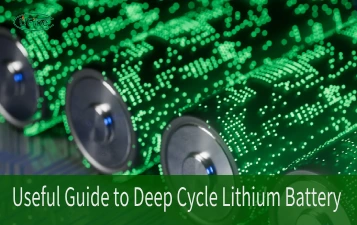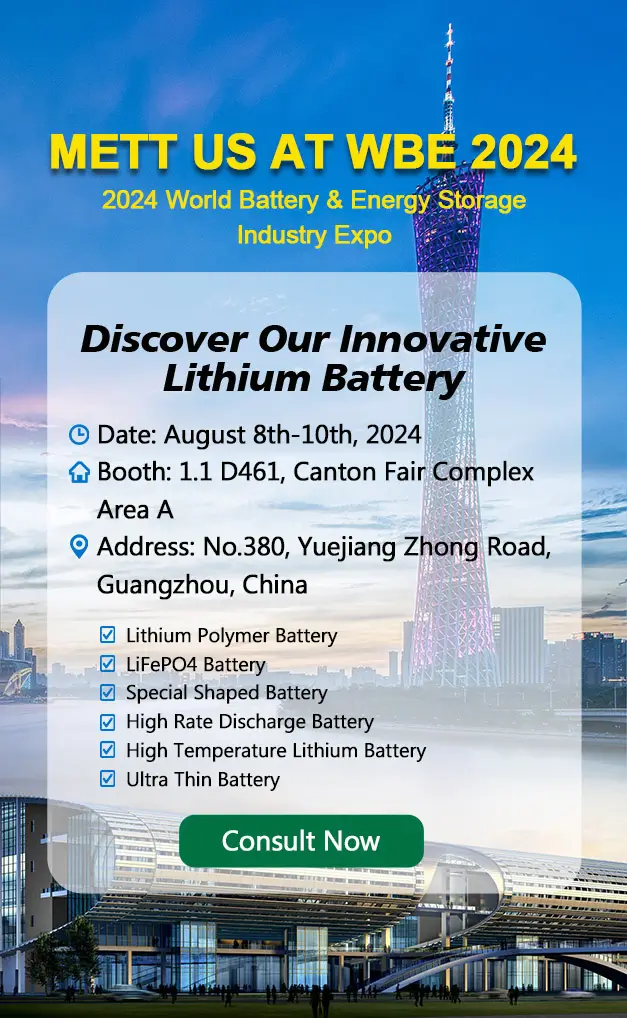The lithium polymer battery, also known as a polymer lithium battery, is a chemical battery. Compared to earlier battery technologies, it possesses characteristics such as high energy, miniaturization, and lightweight design. Lithium polymer batteries exhibit ultra-thin properties, enabling them to meet the requirements of specific products. They can be shaped into various forms and capacities, with a theoretical minimum thickness of up to 0.5mm.
Part 1. Lithium battery components
Lithium battery materials mainly include cathode materials, anode materials, separators, and electrolytes.
- Cathode materials: Among lithium cathode materials, the most commonly used materials are lithium cobaltate, lithium manganate, lithium iron phosphate, and ternary materials (nickel cobalt manganese polymer).
- Anode materials materials: Among the negative electrode materials, the current lithium battery negative materials are mainly natural graphite and artificial graphite. The anode materials being explored are nitrides, PAS, tin-based oxides, tin alloys, nano-anode materials, and some other intermetallic compounds.
- Separator: The market-oriented diaphragm materials are mainly polyethylene (PE), polypropylene (polypropylene, PP) -based Polyolefin (Polyolefin) diaphragms. In the structure of lithium batteries, the diaphragm is one of the key inner components.
- Electrolyte: electrolyte from high-purity organic solvent, electrolyte lithium salt, necessary additives, and other raw materials, under certain conditions, according to a certain proportion of preparation.
Part 2. Lithium polymer battery advantages
1. Hight energy density
The operating voltage of a single battery is as high as 3.6V to 3.8V, which is much higher than the 1 and 2V voltage of nickel-metal hydride and nickel-cadmium batteries; Its capacity density is large, and its capacity density is 1.5 to 2.5 times that of nickel-metal hydride batteries or nickel-cadmium batteries, or higher. The polymer lithium battery is 10 to 15% higher than the steel shell battery of the same size, and 5 to 10% higher than the aluminum shell battery, which has become the first choice for color screen mobile phones and MMS mobile phones, and most of the color screen and MMS mobile phones on the market also use polymer cells.
2. Good discharge characteristics
Polymer lithium battery uses colloidal electrolyte, compared with liquid electrolyte, the colloidal electrolyte has stable discharge characteristics and a higher discharge platform. Therefore, its self-discharge is small, and its capacity loss is also small after being placed for a long time.
3. Long life
The cycle life of the polymer battery can reach more than 500 times in normal use.
4. No memory effect
The battery has no memory effect, and it does not have to empty the remaining power before charging, which is convenient to use.
5. Good safety performance
The polymer lithium battery uses aluminum-plastic flexible packaging in the structure, which is different from the metal shell of the liquid battery. Once there is a security risk, the liquid battery is prone to explosion, and the polymer battery will only bulge at most.
6. Small thickness
Lithium-polymer batteries are so thin that they can be assembled into credit cards. Ordinary liquid lithium battery uses the first custom shell, and then plug the positive and negative electrode material method, the thickness is less than 3.6mm, and there is a technical bottleneck, the polymer battery cell does not have this problem, and the thickness can be less than 1mm, in line with the current mobile phone demand direction.
7. Lightweight
Lithium polymer batteries Batteries using polymer electrolytes do not need a metal shell as protective outer packaging. The weight of the polymer battery is 40% lighter than the steel shell lithium battery of the same capacity specification, and 20% lighter than the aluminum shell battery.
8. Low internal resistance
The internal resistance of the polymer lithium battery cell is smaller than that of the general liquid battery cell, and the internal resistance of the domestic polymer battery cell can even be below 35, which greatly reduces the battery power consumption and extends the standby time of the mobile phone, and can fully reach the level of international standards. This polymer lithium battery, which supports large discharge currents, is an ideal choice for remote control models and has become the most promising alternative to Ni-MH batteries.
9. Shapes can be customized
Polymer lithium battery manufacturers are not limited to the standard form factor and can be economically made to the right size. The battery can increase or reduce the thickness of the cell according to the needs of customers, develop new cell models, the price is low, the mold opening cycle is short, and some can even be tailored according to the shape of the mobile phone to make full use of the battery shell space and improve the battery capacity.
10. The protection board design is simple
Due to the use of polymer materials, the polymer lithium battery cell does not fire, does not explode, the battery cell itself has enough safety, so the protection line design of the polymer battery can be considered to omit PTC and fuse, thereby saving battery costs.
Part 3. Lithium polymer battery applications
Lithium polymer batteries offer attractive advantages to manufacturers. Almost any shape of battery can be easily manufactured. For example, it can meet the space and weight requirements of mobile devices and laptops. It also has a low self-discharge rate of about 5% per month.
Drones and radio control equipment
Lithium polymer batteries are now used to power commercial and amateur drones (unmanned aerial vehicles), radio-controlled aircraft, radio-controlled cars, and model trains. They are virtually ubiquitous, with the benefits of weight reduction, increased capacity, and power transmission.
The long-term storage voltage of the lithium polymer battery should be in the range of 3.6-3.9V per section. Lithium polymer battery packs are also widely used in air guns and offer a very significant performance boost (high rate of fire) compared to conventional NIMH batteries due to their high discharge current and excellent energy density.
Consumer electronics
Lithium polymer batteries are used in mobile devices, mobile power supplies, ultra-thin laptops, portable media players, video game console wireless controllers, wireless PC peripherals, e-cigarettes, and small devices with high energy density that can reduce costs.
Electric vehicle
Modern cars use this type of battery in some pure electric and hybrid vehicles, and some urban car-sharing programs use this type of battery.
Part 4. FAQs
-
Are lithium-polymer batteries rechargeable?
Lithium polymer batteries can be recharged, but we recommend that you use a standard charger, full to 100% of the battery, do not use an uncertified charger, or casually connect to the power supply for charging, to avoid damage to the battery. -
What are lithium-polymer batteries used for?
-
How do I know if my lithium polymer battery is swelling?
-
What is the life of lithium polymer batteries?
Related Tags:
More Articles

Overview of Deep Cycle Lithium Battery
In this article, we explore the life, voltage, capacity, and charging considerations of deep cycle lithium batteries.
How Long do Lithium Batteries Last?
How long do lithium batteries last? we will explore the factors that influence the lifespan of lithium batteries and provide insights into their longevity.
How to Choose the Best LiFePO4 Battery?
Choose LiFePO4 batteries for superior performance, safety, and versatility in EVs, UPS, and backup power. This guide helps you make informed decisions.
Get 12v Lithium Car Battery As a Power Source for the Ride
Make the right choice for your vehicle's battery needs by installing a 12 volt lithium car battery. You will enjoy maintenance-free longevity with this change.
Everything About A Small Lithium Ion Battery
Discover the features, uses & future potential of a small lithium ion battery. A compact and tiny powerhouse ideal for smartphones, wearables, drones & more.





